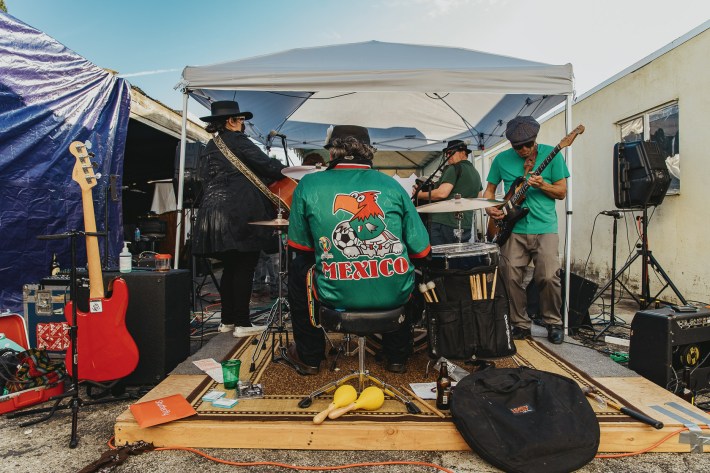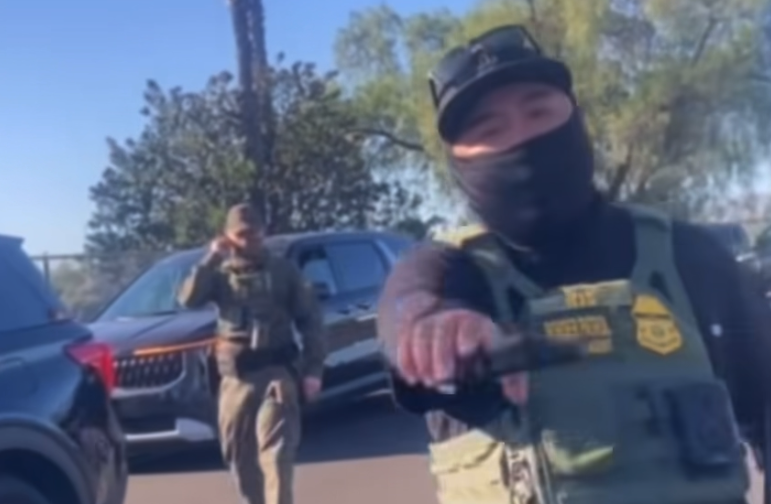This article was originally published on Boyle Heights Beat.
More than 40,000 acres have burned in wildfires across Los Angeles County, and air quality indexes have reached a high of 400 to 500 in communities near fire areas.
So what does that mean for Eastside residents, many who are already exposed to high rates of air pollution?
Before the wildfires broke out last Tuesday, the Boyle Heights zip code ‘90033’ had received an ‘F’ grade when it came to ozone and particle pollution, according to the American Lung Association.
Historically, air pollution levels on and near L.A.’s Eastside have been disproportionately high compared to the western parts of the city and county, according to a UT Community News analysis of state data. Diesel emissions and fine particulate inhalable matter (PM 2.5) are 8% in this area of the city, the analysis showed.

The community has been affected by high smog and poor air quality due to the nearby freeways, rail yards, and industrial activities. East L.A. is crisscrossed by heavily trafficked freeways like the I-5, I-10, and I-710.
These freeways are major sources of diesel emissions and other pollutants from trucks and cars, contributing to high levels of nitrogen oxides (NOx) and particulate matter.
Compared to more affluent neighborhoods, areas like Boyle Heights and East L.A. have fewer trees and parks, which naturally help filter pollutants and improve air quality.
As a result, residents in these communities often experience poorer air quality, which contributes to health issues. For example, people in Boyle Heights are 75 to 86% more likely to develop asthma than those in other parts of California, according to a case study by East L.A. Community Corporation.
These predominantly Latino communities already face the burden of pollution and economic challenges. Now, they are also dealing with increased health risks from the rising levels of wildfire smoke, making an already difficult situation even worse.
Despite the wildfires, there are few to no areas in Boyle Heights where residents are safe from the pollution of nearby freeways. Although regulators suggest a 500 to 1000-foot distance from highways, the pollution can still travel up to one mile.
Compared to the rest of California, Boyle Heights’ pollution burden is 20 points higher.
We spoke with Stephen Ladochy, professor emeritus at Cal State L.A. who specializes in climatology, about the air quality affecting the Eastside and what residents can do about it. The interview has been edited for length and clarity.
What can you tell me about the air quality on the Eastside and what makes these air pollutants so harmful for residents?

It varies from street to street, but in general, East L.A. is surrounded by freeways, major traffic sources like cars, trucks, and buses, which are a major source of particulates. This leads to much higher levels of pollution, particularly in that area, than the rest of the city.
What impact do you think the smoke from these wildfires is having on the already poor air quality for residents?
The amount of particulates in the air is huge, especially around the fires and downwind. The air quality index is extremely high, particularly downwind of fire zones, reaching unhealthy levels. Fires are worsening the situation.
Plus, what’s burning is homes, and homes which were built way back in the 1920s, and asbestos, lead paint, all sorts of metals, and those are also very harmful to the system.
How long can we expect the impact of the fires and smoke to last?
The AQI values have dropped considerably, but levels are still higher than normal, especially this time of year. Winter usually brings cleaner air, but summer has stronger pollution. The mountains have started clearing up, but areas near the fires remain bad.
What long-term diseases or health problems can this lead to?
When I was growing up in L.A., breathing the air was like smoking two packs a day. It was really bad. It’s not that bad anymore, but fine particulates, known as PM2.5, get deep into the lungs and bloodstream. This causes mostly respiratory damage. People with asthma or other ailments will experience worse symptoms, but even healthy people, like athletes, who breathe in more oxygen, will take in a higher dose of particulates. So, it’s definitely unhealthy.
What measures can residents take to stay safe and prevent health problems as fires rage?

Listen to what all the officials are suggesting, as in, K-95 masks, air filtering, and air purifiers. Air purifiers are definitely a must during the fires. Keep windows closed and stay inside to stay safe and avoid bringing harmful particulates inside.
If you’re outside doing very strenuous work and are working very hard, you shouldn’t be out there when the levels are very high, stay indoors.
It just makes sense to avoid high levels of air pollution.
Boyle Heights and East L.A. already face environmental burdens and a lack of green spaces. What can be done to limit them?
There’s a lot we can do to clean up the air in East L.A., starting with vegetation. Planting trees, shrubs, and all sorts of vegetation, actually absorbs a lot of the particulates and the ozone, so it can lessen the acts of air pollution.
A lot of it is also the structures themselves. We really have to clean up our buildings so that they’re not a source of articulates and air pollution. We need to insulate buildings and include mandatory air filters.
Traffic is the biggest contributor to air pollution in Southern California. We need more electric vehicles, better buses, and efficient public transportation to reduce pollution. Cycling, walking, and using public transport can all help reduce the reliance on polluting cars.
Anything else you’d like to share about contributing factors of poor air quality?
There’s a lot of misunderstanding about ash falling from the sky. It contains fine particulates, metals, and toxins, all of which are dangerous to inhale.
Global warming and climate change also contribute to air pollution. So the warmer the weather, the higher the photochemical smog levels and chemical reactions speed up in hot warmer air.
So getting rid of the cars means a cooler city, more plants, more trees, more shade, that would go a long ways to reducing pollution in the long run.







